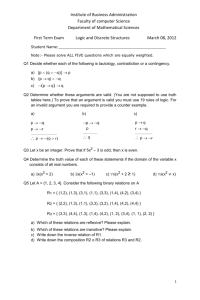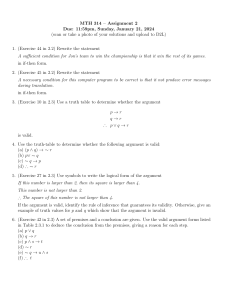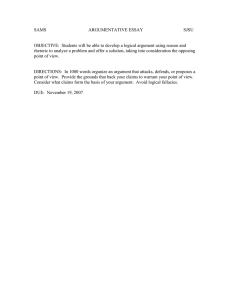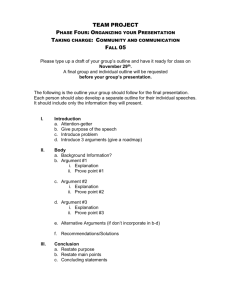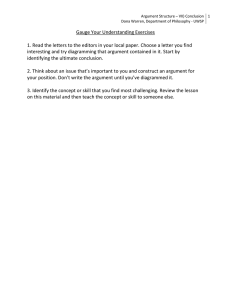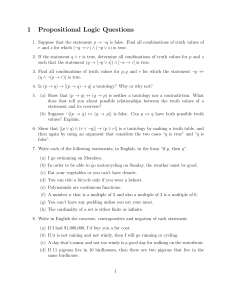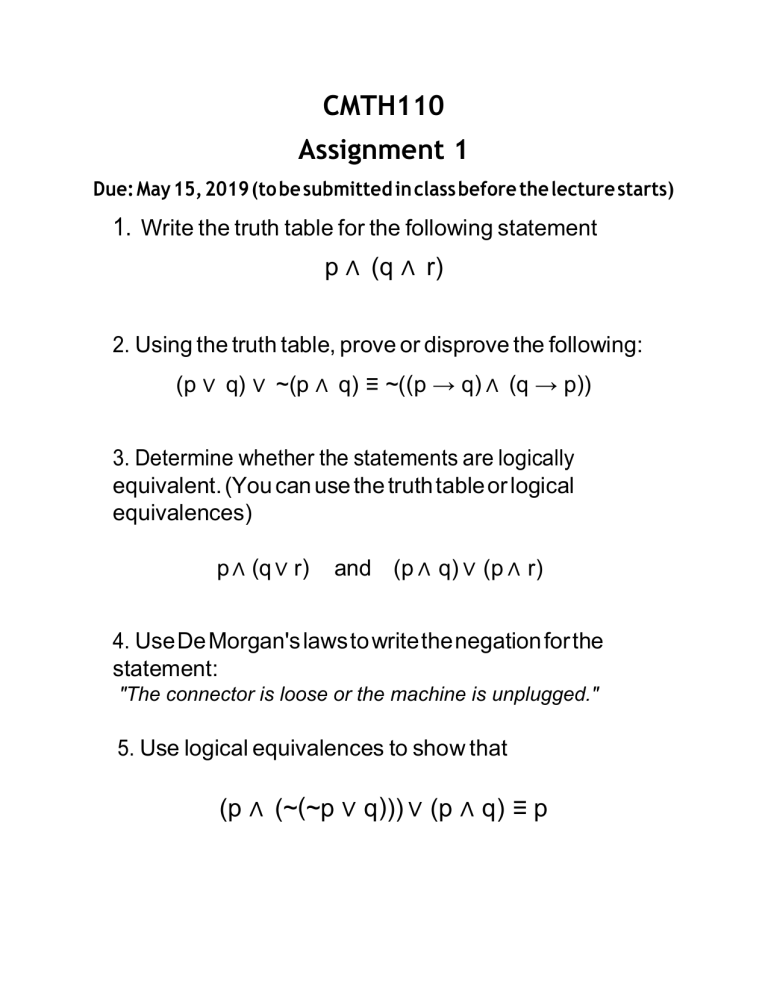
CMTH110
Assignment 1
Due: May 15, 2019 (to be submitted in class before the lecture starts)
1. Write the truth table for the following statement p ∧ (q ∧ r)
2. Using the truth table, prove or disprove the following:
(p ∨ q) ∨ ~(p ∧ q) ≡ ~((p → q) ∧ (q → p))
3. Determine whether the statements are logically equivalent. (You can use the truth table or logical equivalences) p ∧ (q ∨ r) and (p ∧ q) ∨ (p ∧ r)
4. Use De Morgan's laws to write the negation for the statement:
"The connector is loose or the machine is unplugged."
5. Use logical equivalences to show that
(p ∧ (~(~p ∨ q))) ∨ (p ∧ q) ≡ p
6. Use truth table to establish whether this statement is a tautology or a contradiction
(p ∧ ~q) ∧ (~p ∨ q)
7. Rewrite the following statement in if-then form:
“A sufficient condition for Jon's team to win the championship is that it win the rest of its games.”
8. Rewrite the following statement in if-then form:
“A necessary condition for this computer program to be correct is that it not produce error messages during translation.”
9. Use truth table to determine whether the following argument is valid p → r q → r
∴ p ∨ q → r
10. Use symbols to write the logical form of the argument
If this number is larger than 2, then its square is larger than 4.
This number is not larger than 2.
∴
The square of this number is not larger than 4.
If the argument is valid, identify the rule of inference that guarantees its validity. Otherwise, give an example of truth values for p and q which show that the argument is invalid.
11. Use the valid argument forms listed in Table 2.3.1 to deduce the conclusion from the premises, giving a reason for each step. a) p ∧ q b) q → r c) p ∧ s → t d) ~r e) ~ q → u ∧ s f) ∴ t
12. Suppose ((p → q) ∧ p) is true. Prove by contradiction that q is also true.
